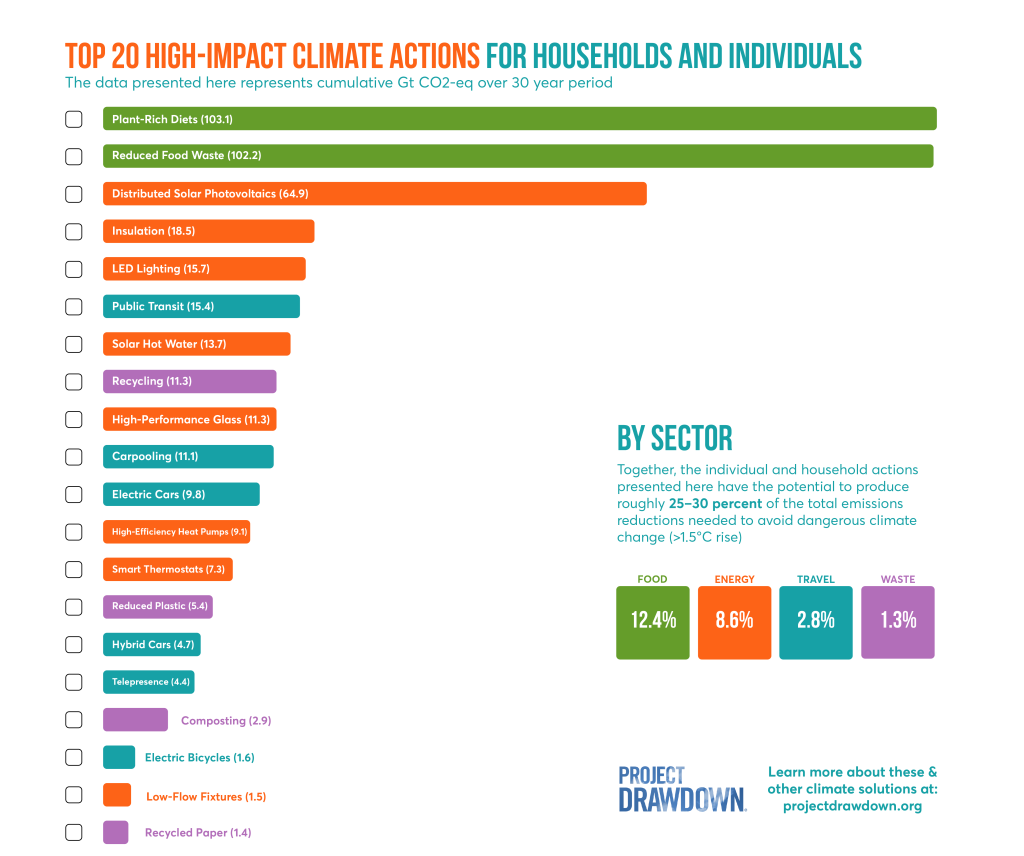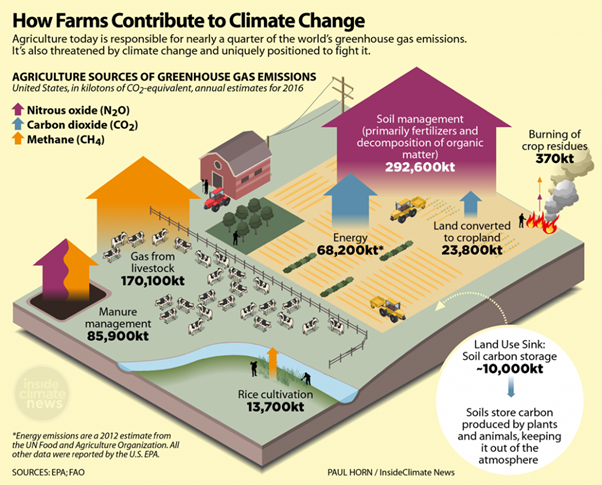- Alternative food
- Engineering biology
- IMSE people
- Smart surfaces
- alternative food
- climate action
- food waste
- invididual action
- monitoring
- sensors
Not a drop in the ocean, households’ potential to reduce carbon emissions
Travelling by public transport, recycling our home waste, using re-fillable water bottles or taking a tote bag to the supermarket. We have all heard about the little changes we can do to reduce carbon emissions and protect the environment. However, the action with the biggest impact is related to food!
Project Drawdown has identified a series of practices and technologies with direct effect on emissions that are scientifically validated and economically viable.
A drop in the ocean?
Their analysis revealed that household activities could contribute to avoid dangerous climate change, defined as an increase in global temperature larger than 1.5°C. Individual actions have the potential to reduce the total emissions needed to avoid that temperature increase by 25-30%. Definitely not just a drop in the ocean! While large businesses and governments are responsible for most emissions (70-75%), our choices also play an important part.
How can we help?
Among the 20-high impact actions we find better home insulation, public transport and recycling. But above all, adopting a plant-rich diet and reducing food waste make up 12.4% of the 25-30% household potential for reductions. Adapting our diet and reducing the food we buy but don’t eat could really make a difference.

Reducing consumption of animal food products
The action with the largest potential is the adoption of a plant-based diet. Or simply reducing our consumption of animal food products. This is due to the animal-food production and industrial agriculture being a large contributor to climate change. The emissions from agriculture represent 11% of the total global emissions. Moreover, industrial agriculture requires large amounts of land and water leading to deforestation and wildlife lost.
In our next blog, we will talk about alternative food sources that offer people sustainable choices.

Reducing food waste
Food waste is food we don’t eat. 70% of UK food waste comes from our homes. These are mostly potatoes, bread, milk and fizzy drinks. Beyond consumption, waste is also generated in the food supply chain through processing and distribution. Water, land and energy are some of the resources required to produce food and get it into our homes through transportation.
According to the ‘Waste and resources action programme’ (WRAP), every day we waste 20 million slices of bread. This creates greenhouse gas emissions equivalent to 140,000 cars every year!

The United Nations wants to half world food waste by 2030. Governments and supermarkets are creating initiatives to reduce food waste. Researchers at Imperial are also working on this topic. The Güder group is designing packaging systems that monitor food quality, storage and shelf life. They make sensors that measure the gases released by food while it degrades. These sensors allow scientists to analyse how temperature and other environmental conditions affect food storage. Moreover, the sensors are designed to provide real time data to smart devices, streamlining quality control and reducing food waste. They could be used by supermarkets and consumers, becoming a more reliable measurement than the use-by date. Sensors need to work at both cold and warm temperatures to mimic storage and transport of products. They also have to be affordable and compatible with food, all of which the Güder group is already considering!
Come back in a couple of weeks to learn about alternative proteins. For now, let’s remember that everyone can make a difference, and while doing so, inspire others.